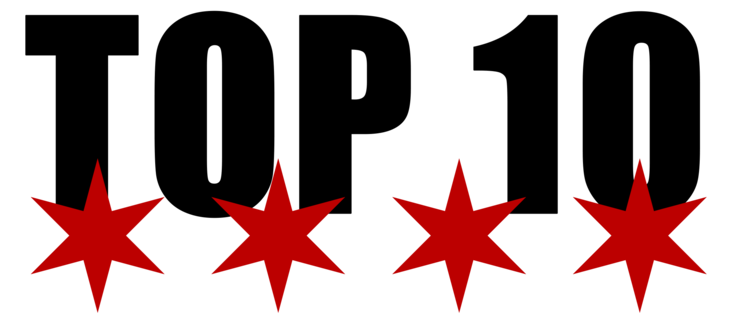When–and perhaps if–we have a baseball season in 2022 (come on, players and owners, work with us here!), it will be a frenzied rush to sign free agents, fill rosters, and conduct some type of spring training for the 30 Major League Baseball clubs. It will be a constant barrage of player updates, rumor mill talk, and a chance for 30 teams to dream about the postseason.
For the Chicago Cubs, dark horses at best for the 2022 postseason, there is a road to a playoff appearance. The road is not paved, there are no street lights or directional signs, but it is a road nonetheless.
How can the Cubs be in the playoff hunt in 2022? There are three main ways specific to their team, but two general ways that will help them–and all teams–as well.
First, if there is to be a 2022 baseball season, there is a decent chance the season will have a reduced amount of games played. The traditional 162-game schedule seems daunting in any calendar year, but with the season likely delayed until at least mid-April, it’s anyone’s guess as to how they’ll be able to squeeze 162 games into five-plus months. A shortened season would, in theory, help the Cubs immensely. How?
Without a 162-game gauntlet, the Cubs, who are short on depth and star power, could potentially get to the finish line with just enough in the tank to stay in contention for a season. Baseball’s typical 162-game season usually weeds out the pretenders from the contenders, as teams tend to fade in the grueling dog days of summer baseball in August and September. But a shortened season, say 140-145 games, would give the Cubs less of a road to travel, and the holes in their roster could be more easily hidden. The Cubs are not built for a marathon as of now, but maybe a 5k or 10k would allow them the chance to win enough, for long enough.
Another way the Cubs can contend in 2022 is using simple math. If the players’ union and owners can agree on a new collective bargaining agreement, there is a strong chance the playoff field will increase from its current 10-team format to potentially 12 or even 14 teams. 12 is more than 10. 14 is also more than 10. See? It’s simple math.
If the National League has six playoff teams (or seven) then the Cubs can sneak in as the No. 6 or No. 7 seed, likely playing just over .500 baseball. There are only 15 teams in each league, so maybe it’s not too far-fetched to see the Cubs as the sixth or seventh best team.
But they’ll also need these three big things to happen for even that to occur.
1. Kyle Hendricks and Marcus Stroman Prove to be a Formidable 1-2 Punch
To the surprise of some, the Cubs were aggressive in free agency before the lockout took place, and signed one of the more-coveted starting pitchers on the market, Marcus Stroman, to a three-year deal worth just over $70 million. Cubs fans must be relieved to see the Ricketts family finally overcoming their biblical losses on the heels of the pandemic, with their checkbooks now hopefully open.
Now, back to the topic at hand, Marcus Stroman. There is a lot to be excited about for the former All-Star pitcher. Stroman is one of the game’s most durable pitchers, which will come in handy for a Cubs team that used 12 starting pitchers during the 2021 season. Stroman made 33 starts last year, which tied for the Major League lead, and has made 30+ starts four times over his last seven seasons. He sat out the 2020 season due to the Covid-19 pandemic, and the Mets did not push him beyond 180 innings last year as they handled him with kid gloves, so Stroman should be good to go for a heavy workload in 2022.
And that’s a good thing if you’re a Cubs fan. His 50.8% groundball rate was the 8th-best in baseball a year ago, well above the Major League average. Why is that important? Well, ground balls don’t turn into home runs very often, and the Cubs gave up the 4th-most home runs of any team in baseball last year. The two best teams in the National League, (the San Francisco Giants and Los Angeles Dodgers), allowed 151 and 161 homers, respectively, which were two of the best rates in baseball. The Cubs allowed 235. Yikes.
Stroman also holds a nifty 3.63 career ERA (3.02 last year), 1.26 career WHIP (1.14 last year), a top-10 Cy Young award finish to his name, and is a Gold Glove winner. That’ll play well for the Cubs in 2022.
Kyle Hendricks’ 2021 season was not one to celebrate, much like his teams’ season in general. His 4.77 ERA was the worst of his career and he gave up the most hits (200) of anyone in baseball last year. Hendricks is not blessed with over-powering stuff or a fancy repertoire. He relies on finesse, accuracy, and changing speeds to deceive hitters. When things are going well for Hendricks, he can be one of the best starters in baseball, as his 3.36 career ERA ranks 12th among active big-league starters. He has an ERA title under his belt and two top-10 Cy Young award finishes on his resume.
But, yes, he’s hittable. Hendricks saw an increase in his Batting Average on Balls in Play (BABIP) last year (.302 last year; .284 career) so there’s the potential that bad luck was at least partially to blame. His average exit velocity, hard-hit rate percentage, and line-drive percentage were at–or below–career norms, so there should be no reason to doubt the 32-year-old going forward. Fans should expect a rebound for Hendricks in 2022, and Kyle will certainly welcome the addition of Stroman and the new No. 3 starter Wade Miley to take some of the pressure off him in the starting rotation.
2. Ian Happ Plays like an All-Star for a Full Season
Inconsistency has been the name of the game for Ian Happ. One minute, he’s a 22-year-old rookie with 24 home runs and a .514 slugging percentage, and the next minute he’s hitting a laughable .183 with an On-Base Plus Slugging percentage (.OPS) of .626 like he did in the first half of the 2021 season. Happ has shown great flashes of potential, like in 2020 when he received MVP votes after a pandemic-shortened campaign saw him slug over .500 with an OPS of .866. Now, the question is: can he do it for a full season?
In Happ, who is one of the last men standing from the Cubs’ championship-contending teams of 2015-2020, the Cubs must see what he is and what he can be for their future. At just 27-years-old, there is still room for Happ to improve and be a consistent force in the Cubs’ lineup. He can play different places around the field, which helps keep him in the lineup most days, but the Cubs need his bat to produce. Without Kris Bryant, Javier Baez, Anthony Rizzo, and Kyle Schwarber, Ian Happ needs to play like an All-Star and solidify the middle of the Cubs’ lineup in 2022.
3. A Player Emerges, Gets & Stays Hot
Even if Stroman, Hendricks, and Happ play like All-Stars in 2022, the Cubs will still need much more to contend in 2022. Admittedly, this is sort of a vague, shot-in-the-dark attempt to list the players below that may get hot and maintain it for 2022. The obvious choice and most likely candidate would be Willson Contreras, the two-time National League All-Star.
Here are some others the team will have to count on:
- Frank Schwindel
Schwindel burst onto the scene in late 2021 (after the Cubs traded Anthony Rizzo to the New York Yankees) with a .342 batting average, 13 home runs, and 19 doubles across just 222 at-bats. The 29-year-old finished No. 6 in National League Rookie of the Year voting. Can he carry that ‘21 success over into ‘22? Even with a potentially shortened baseball season, Schwindel will need to stay strong for 400+ at-bats to help the Cubs contend.
- Patrick Wisdom
Wow, Patrick Wisdom hit 28 home runs last season! But oh no, he struck out over 40% of the time! For Wisdom to be a serious player in the get hot/stay hot game, he needs to put the ball in play more and not go down on strikes as easily. Strikeouts will be his downfall, and all the power in the world won’t help him. Here’s hoping Wisdom worked on his contact skills in this longer-than-expected offseason.
- Clint Frazier
The former No. 5 overall choice in the 2013 MLB June Amateur draft has had opportunities at the big league level, but to date, hasn’t been able to put it all together. After the Cleveland Indians selected Frazier and he became their top prospect, he was traded to the Yankees in 2016 as part of a package of players for Andrew Miller, the electric middle reliever who gave the Cubs fits in the 2016 World Series. Frazier played parts of five seasons in the Bronx, with moderate success. He produced two seasons with an .OPS over .800, but also battled injuries and inconsistency. His .186 batting average in 2021 was the final straw for the Yankees. The Cubs hope they are catching lightning in a bottle with Frazier, still just 27.
- Rafael Ortega
Ortega took advantage of everyday at-bats in 2021 and produced a .291 batting average and double-digit home runs (11) and steals (12), for Manager David Ross and the Cubs. He is likely not going to be an All-Star caliber player, but he showed enough in 2021 to earn himself playing time early in the season ahead. If he hits well enough and plays consistent defense, he will be valuable.
- A Free Agent Signing
Not liking what you’re seeing from the names above? How would Carlos Correa or Trevor Story sound, Cubs fans? What about a reunion with Nick Castellanos or Kyle Schwarber? We can dream, can’t we? If the Cubs are willing to shell out $300+ million for the superstar Correa, or $150+ million for Story, a two-time All-Star, then this would easily be the Cubs’ best chance for a player to get hot/stay hot. As of this writing, these players remain unsigned and will need new homes for 2022 and beyond. Why not 1060 West Addison Street, on Chicago’s north side?
For the Cubs to be playoff contenders in 2022, these three big things likely need to occur. If they do–and if other surprises pop up along the way–might we see the Cubs in the playoffs this year? Baseball is a funny game. If they stay healthy, perform as they have in the past, and get off to a fast start, anything is possible in what could be another strange year for Major League Baseball.












